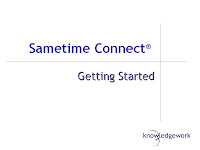Why learning objects make sense
It’s about learning by design. When you offer learning in the form of bite-size chunks, known as modules or objects, you set yourself up for knowledge-sharing success on many different levels.
Cognitive load. Your customers and employees are much more likely to retain information about your product and service when it’s presented in smaller pieces. Our working memory can only retain about four ideas at a time, so it’s a good idea to give people the option to go to something, learn about it, and come back again when they’re ready.
Adaptability. When information is built in smaller pieces, it’s more flexible and less costly to change it according to learner needs. Equally, it is easier to build upon information that has already been learned by adding new information incrementally. This lets you custom build training that grows with the learner. There has never been a better time to build a scalable knowledge base for your customers and employees.
Focus. Learning products offered in smaller chunks have the benefit of focusing exactly on what learners need to know.
In today’s busy world, people don’t have time to sift through long documents or attend lengthy training or e-learning sessions. Instead, why not offer them searchable content where they can access exactly what they need, when they need it?
Reuse. When information is easier to find, and use, it’s also easier to reuse. Changing information in the form of updates, versions and compliance requirements can put a burden on content developers. Updating information that is built in smaller reusable chunks is much easier because only the parts that need changing are affected.
Interoperability. The increasing use of learning management systems makes learning by design even more sensible. Using a learning framework such as SCORM means that you know your information can be included in a learning management system in the future should you choose to go that way.



